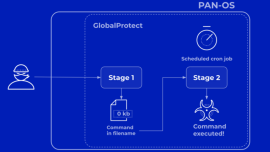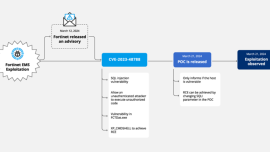
Data protection is top of mind for almost every CIO or CISO across all industries. Nowadays, many organizations are caught in the crosshairs of cybersecurity challenges, often due to common oversights and misconceptions about data security.
Pitfall 1: Failing to move beyond compliance
This is when organizations only focus on meeting data security standards such as GDPR or SOX, without enhancing their data protection capabilities against new threats. Compliance does not mean complete data security, because effective data security requires being proactive and innovative in identifying and mitigating risks, not just checking the requirements in audits.
Solution: Recognize compliance as a starting point.
Organizations must go beyond compliance by adopting a strategic, proactive approach to protect critical data. The strategy should include discovering and classifying sensitive data, using analytics for risk assessment, enforcing data protection through encryption and access controls, monitoring for unusual activity, responding to threats quickly and streamlining compliance reporting. Understanding the broader implications of data breaches (such as legal liabilities and potential losses) is essential in developing robust data security measures.
Pitfall 2: Not recognizing the need for centralized data security
This is when organizations use multiple data sources, but do not have a centralized system for managing and securing data. When data is stored on different platforms, especially on the cloud, organizations will face difficulties in monitoring and controlling their sensitive data, creating gaps and weaknesses in their security protocols.
Solution: Know where your sensitive data resides
Effective data security involves knowing where and how sensitive data is stored and accessed, and integrating that knowledge into the broader cybersecurity program to ensure smooth communication between different technologies. Using a data security solution that operates across various environments and platforms is crucial for effective data protection and cybersecurity integration.
Pitfall 3: Unclear responsibility for ownership of data
This is when organizations do not clearly identify who is responsible for collecting, storing, using and deleting data. Clearly defining data ownership and responsibility is very important for effective data management. Each team or employee must understand their role in protecting data to create a secure culture.
Solution: Hire a CDO or DPO
Hiring a Chief Data Officer (CDO) or Data Protection Officer (DPO) is a good start for effective data management and security, especially for GDPR compliance. These roles require technical knowledge, business acumen, risk assessment skills and the ability to direct strategic data security activities. They should also manage compliance, monitor program effectiveness, negotiate with cloud providers and lead data breach response plans. Their role is key in fostering organization-wide collaboration on data security.
Pitfall 4: Failure to address known vulnerabilities
This occurs when organizations do not promptly patch security vulnerabilities that have been publicly disclosed, allowing cybercriminals an opportunity to exploit them. Despite available patches, many businesses delay deployment for various reasons, putting sensitive data at risk.
Solution: Implement a comprehensive vulnerability management program
A robust vulnerability management program is crucial for cybersecurity and involves regular scanning and assessment of all data assets (including cloud data). Prioritizing vulnerability remediation based on exploitability and business impact is essential. Protective measures should also include data obfuscation techniques such as encryption and tokenization, as well as robust key management
Pitfall 5: Insufficient data activity monitoring
This occurs when leaders fail to pay attention to who accesses data, what they do with it, and when. It includes ensuring appropriate access levels and assessing related risks especially concerning high-privileged users who often pose serious internal threats.
Solution: Establish a comprehensive security and data governance strategy
Initiating a data security initiative requires aligning monitoring efforts with specific risks and business objectives, and applying a phased approach to implement best practices. Priority should be given to monitoring the most sensitive data sources with clear policies and investment in automated monitoring solutions with advanced analytics to detect risks and anomalous activities especially among high-privileged users.




